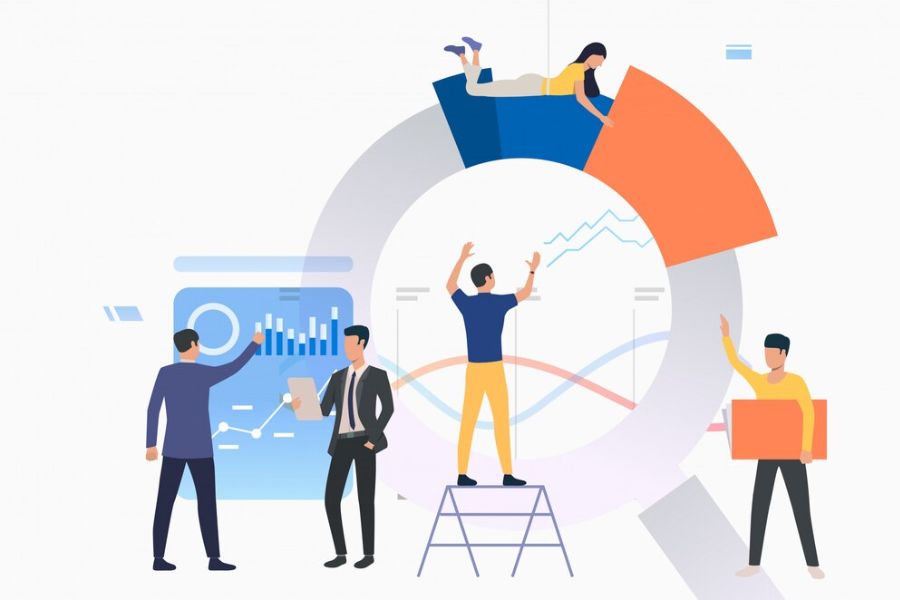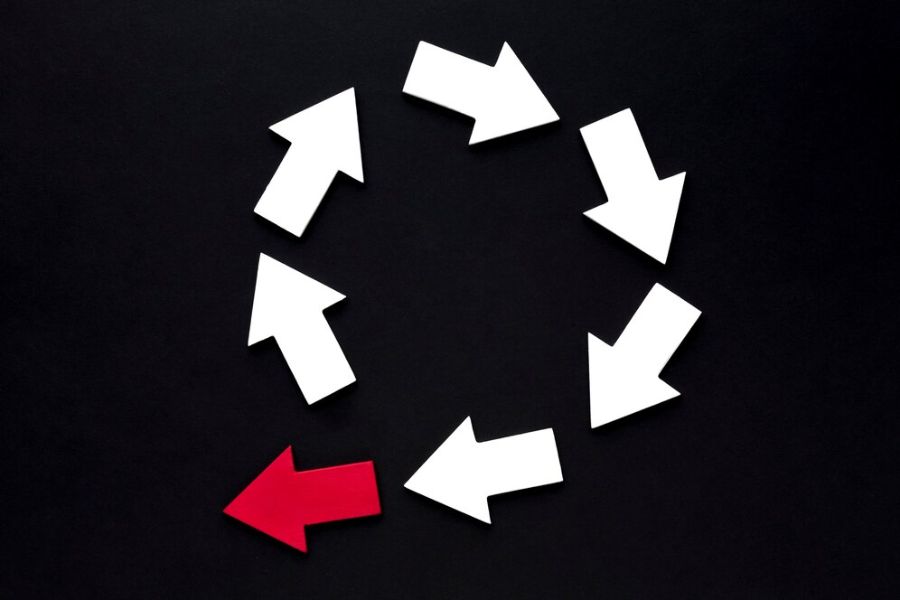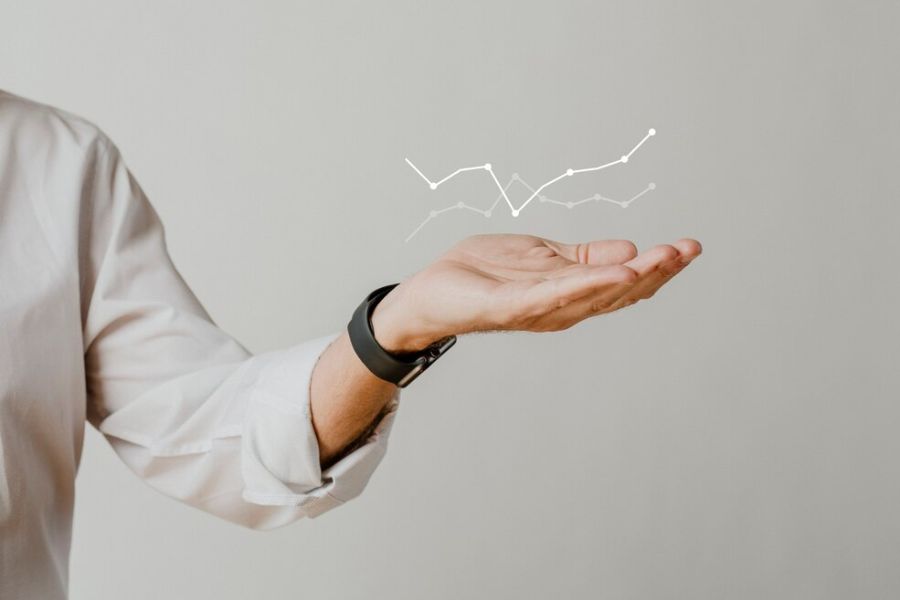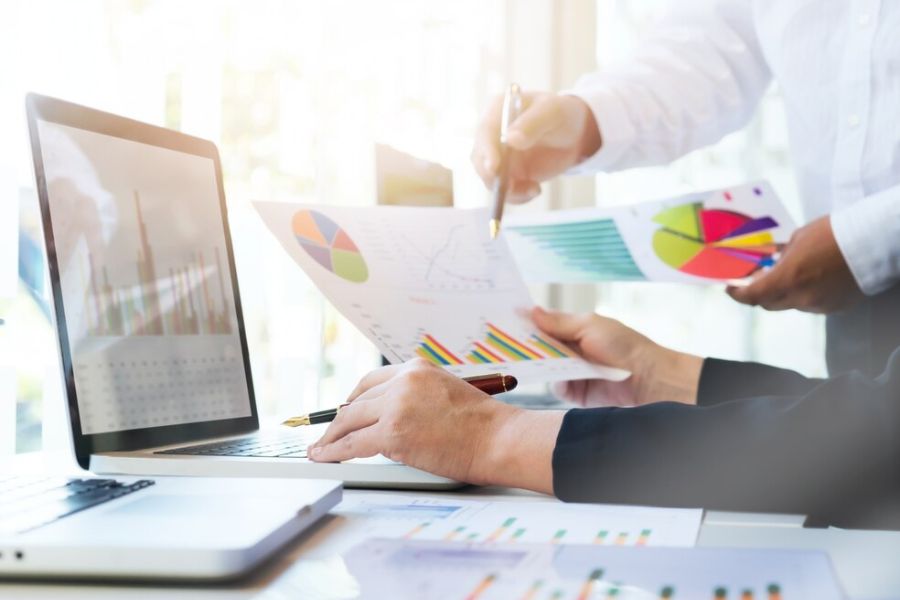
Source: Freepik
What is a sales cycle, and why is it important for your e-commerce business?
Understanding the sales cycle helps you navigate the ever-changing e-commerce niche in Indonesia. By mastering it, you can maximize your revenue.
This comprehensive guide breaks down the sales cycle. We’ll provide actionable insights for the Indonesian market and beyond.
Dive into this guide to learn everything about the e-commerce sales cycle!
What Is a Sales Cycle?
A sales cycle is the structured process that leads a potential buyer from initial contact to making a purchase.
It has phases to follow, which are the following:
- Lead generation. This is when you’re looking for potential customers.
- Contact. Once you’ve identified your buyers, this phase is when you reach out to them.
- Lead qualification. This phase is when you determine if they’re likely to buy from you.
- Presentation. In the presentation stage, you display what you have to offer.
- Objection handling. This is when you answer your customers’ questions, objections, and concerns.
- Closing. The “close” is making the sale.
- Follow-up. The cycle doesn’t end when you make the sale. Next, the follow-up is when you ensure top-quality service post-sale.
The sales cycle starts with the first encounter and ends when the customer decides to buy (and even beyond). Thus, it is a core process for driving online store growth and staying ahead in the competitive e-commerce niche.

Source: Freepik
Why the Sales Cycle Is Important for E-commerce
Understanding the sales cycle is important. This is because it helps you pinpoint where potential buyers might drop off and where you improve cycle conversion rates.
Also, it’s not just a fancy ecommerce term. The sales cycle has a direct impact on your revenue and reputation.
Here are three benefits of this process:
- Improves operational efficiency. Analyzing and tracking sales data will help you identify bottlenecks in the customer experience. Thus, you can formulate easier processes to maximize efficiency at every stage.
- Helps improve business strategy. Keeping an eye on the sales cycle helps you make smarter decisions and more accurate sales forecasting. By looking at metrics and trends, you can be ready for what buyers want and adjust your marketing plans to stay competitive.
- Enhances customer experience. Making sure sales go smoothly means buyers have a great experience all the way through. After all, when you manage sales well and optimize the process, you make each interaction feel personal. As a result, your customers are happier and keep coming back for more.
Not understanding how crucial the sales cycle is could cause you to waste time and money. In contrast, if you make the sales process a top priority, you’ll give yourself a better shot at doing well in the tough online Indonesian business world.
Stages of the Ecommerce Sales Cycle
You should also optimize your online store’s sales cycle. To do this, you need to document everything. You should guide customers from the moment they discover your business to the moment they make a purchase.
This is the digital version of the traditional sales cycle. However, it has key differences that make it unique to the online world.
For one, the ecommerce sales cycle is faster. In traditional sales, buyers will visit a lot or talk to salespeople before purchasing. Online, decisions happen quickly, often within minutes.
Ecommerce is also very data-driven. Every click, scroll, and purchase is tracked to refine your plans. Traditional sales depend more on direct feedback and face-to-face interactions.
With these key differences, there are some slight variations in the sales cycle. It has the following stages:
- Awareness. Customers discover your online store.
- Interest. Visitors browse your website. They will read descriptions, watch videos, or add items to their cart.
- Consideration. At this stage, potential buyers weigh their options. They compare prices, read reviews, or seek discounts.
- Decision. Then, they decide to purchase. This is the phase from entering their details to completing the transaction.
- Purchase. The transaction is finalized, and the order is confirmed.
- Post-purchase. This is the phase where you send follow-up emails and customer service. Good post-purchase care ensures satisfaction, thus encouraging repeat buys.
- Customer retention. Strategies like loyalty programs or personalized recommendations keep customers returning. Thus, they increase the clients’ value over their entire customer lifecycle.
Understanding the customer journey in ecommerce shows you where potential buyers drop off. Consequently, this knowledge lets you fine-tune your plans. For example, if many visitors abandon their carts, you might need better incentives at the decision stage.
Ultimately, this knowledge is great for conversion rate optimization and increasing ecommerce revenue.
Fine-Tuning Your Sales Cycle: Strategies for Optimization
Your sales cycle is one of the most important business processes. After all, it’s directly related to how your online store earns revenue and delights patrons. A strong sales cycle will boost your business.
With a proper sales cycle, you enjoy reduced time from first contact to a sale and speed up revenue generation. The streamlining will also:
- Save time and resources
- Smoothen the buying journey
- Create happier customers, and
- Increase the conversion rate.
Finally, one of the most important aspects is predictability. With a set and fine-tuned sales cycle, it’s easier to forecast sales and plan for the future.
Here are eight tactics to make your sales cycle run smoother.
Managing the Length of Your E-commerce Sales Cycle
Typically, a sales cycle length, also called cycle duration, can vary from a few hours to several months. This depends on what you’re selling and who you’re selling to.
But don’t worry! You can manage the length of your online sales cycle.
One way is to provide clear and easy-to-understand information on your website. Clear information prevents confusion and frustration.
Thus, when making a new online store, use a platform that is already optimized for e-commerce information. Giving users a website structure that feels familiar and convenient is one way to ensure their comfort when using your site.
Another trick is to follow up with potential buyers promptly. Also, Indonesians love a good deal. Thus, offering promotions or discounts can sometimes speed things up, too!
The shorter the sales cycle, the quicker you can start making those sales.

Source: Freepik
Optimization Strategies for a Streamlined Sales Process
The sales process is your step-by-step guide to turning online audiences into happy buyers. Who doesn’t love a good buying experience? Your customers will certainly thank you for it.
Here are some great tips to make your process super smooth and efficient:
- Personalized outreach. Tailor your offers to each user’s needs and preferences. This way, you build stronger connections and increase sales.
- Simplify your checkout process. Remove unnecessary steps. Use a platform with strong ecommerce support and integration. Make it easy for patrons to complete their buys in just a few clicks.
- Use data to drive decisions. Data is your best friend for improving your sales process. Thus, keep track of metrics like conversion rates and feedback. This identifies areas for improvement and inspires data-driven decisions for more sales.
Optimizing your online sales process creates awesome results.
In contrast, neglecting it has negative consequences. You might end up losing customers to competitors or missing out on sales. Most importantly, a rocky sales process puts off buyers. Worse, you can make them feel like they’ve been taken advantage of. This is a big hit, and one that you should avoid at all costs.
Examining Sales Cycle Efficiency
Let’s discuss why sales cycle efficiency is so important.
When your sales cycle runs smoothly and efficiently, you’ll notice a big increase in sales. Thus, a smooth and efficient sales process means less time wasted and more happy buyers.
But how do you know if your sales cycle is efficient?
First, use tools like CRM (Customer Relationship Management) software. This tracks every step of the sales process, from lead generation to closing the deal.
Also, analyze metrics like conversion rates and sales trends. These determine where you might be hitting roadblocks or missing out on chances.
By examining your sales cycle efficiency, you can make tweaks and improvements that get more sales.
Following an Effective Sales Strategy for E-Commerce
Your sales strategy makes those buys happen in the world of e-commerce. Having a solid sales plan makes a huge difference for your business. It is your secret weapon that helps you close more deals and ultimately make more money.
First, know your target audience inside and out. What do they like? What problems do they have?
Then, once you understand them, you can tailor your plan to meet their needs.
Finally, get creative with your marketing tactics. Find what works best for reaching your audience and achieving sales improvement. Try out:
- Social media ads
- Email campaigns
- Influencer partnerships
- Search engine optimization, etc.
Don’t forget to track your progress along the way so you can make adjustments to its effectiveness and keep improving.
Therefore, with a robust plan in place, your business will be poised for success and well-equipped to thrive.

Source: Freepik
Metrics and Performance Measurement
When it comes to your sales cycle, performance measurement is important.
Here are some key KPIs (Key Performance Indicators), you should keep an eye on:
- Conversion rate. It shows you how many leads turn into actual sales.
- Lead response time. This tells you how quickly you respond to inquiries or leads.
- Customer acquisition cost. This is how much it costs to acquire a new buyer.
- Average order value. It shows how much money they spend on average per order.
Why is tracking these metrics so crucial? By keeping tabs on how well your sales cycle is performing, you can spot areas for improvement and make changes. This creates more sales and happier patrons.
Plus, it helps you make smarter decisions about where to focus your time and resources. So, don’t skip out on tracking these metrics. They are essential for elevating your business to new heights.
You can use both KPIs and OKR (Objective + Key Results) as a measurement tool for your efforts and success.
Automation in the Sales Cycle
This term refers to using technology to perform tasks or processes automatically in various sales cycle stages. By automating your sales cycle, your store can work optimally without the need for human intervention.
In simpler terms, this is the process of setting up robots or computer programs to do repetitive tasks for you.
You could save time and effort by having certain tasks done automatically. This improves efficiency and allows you to serve your customers better. Ultimately, it increases sales.
You can use automation in various parts of your sales cycle, such as:
- Email marketing. Tools like Mailchimp or HubSpot automate email campaigns and follow-ups.
- CRM software. Platforms like Salesforce or Zoho automate customer relationship management tasks.
- Social media management. Tools like Buffer or Hootsuite automate scheduling and posting on social media platforms.
By incorporating automation into your sales cycle, you save time and boost productivity. Thus, these tools forge a more successful e-commerce business.
The Role of the Sales Funnel in Conversion Success
The sales funnel is a visual representation of the steps that patrons take.
It starts from being aware of your product or service to making a sale. It’s called a sales funnel because, at each stage, some potential customers drop off. Thus, you are left with a smaller but more qualified group of leads.
Here are the best practices to optimize your sales funnel and improve your sales cycle:
- Construct clear CTAs. Use clear and compelling calls to action to guide prospects to the next stage of the funnel.
- Increase awareness. Use marketing tactics like social media ads or content marketing to attract more people to the top of your funnel.
- Nurture leads. Provide valuable content and personalized interactions. They will guide leads through the middle of the funnel, building trust and rapport.
- Close sales. Simplify your sales process and offer incentives. As a result, you encourage leads to finalize a buy.
By fixing your sales funnel, you can increase cycle conversion rates and generate more sales. Thus, you ultimately grow your business.
However, failing to optimize your sales funnel leads to missed chances. You can lose revenue due to a less efficient sales process. So, it’s important to pay attention to your sales funnel and make sure it’s working well.
Sales Tracking and Management Software Solutions
This software helps you with the following:
- Organize your sales pipeline,
- Keep track of customer interactions, and
- Track deals from start to finish.
You should consider using these solutions when your sales process starts getting too complex to manage manually.
Drowning in spreadsheets? Struggling to keep track of leads? Maybe you’re even missing out on follow-ups. If that sounds like you, then it’s likely time to invest in sales tracking and management software.
These tools can help streamline your sales process and improve efficiency. Thus, you create more closed deals and keep customers happy.

Source: Freepik
Final Thoughts
Indonesia is booming as a major market in Southeast Asia. For Indonesian entrepreneurs aiming high, understanding the sales cycle is essential to make it to the top. Without this knowledge, you risk inefficiency and missed opportunities.
This article delves into the topic of the sales cycle. It offers actionable insights for the Indonesian market and beyond. Apply these techniques to streamline your processes and boost sales. Then, you can create a more satisfying experience for your buyers.
Don’t miss out on the insights from this guide and apply them to your sales process!
Frequently Asked Questions
What is a sales cycle, and how long does it last?
A sales cycle is the process from first contact with a potential customer to closing a sale, typically lasting a few weeks to several months. This depends on the industry and product complexity. Thus, higher-priced products typically have longer sales cycles.
How can you shorten the sales cycle in Indonesia?
Building strong relationships and understanding local business culture. Also, a great tip is responding quickly to inquiries. This reduces the sales cycle time in Indonesia.
Will technology impact the sales cycle? How?
Technology, especially CRM systems and social media, has big implications for the sales cycle. With software and services, you streamline communication and enhance their understanding. As a result, you speed up the sales process.
What is the difference between a sales funnel and a sales cycle?
A sales funnel in ecommerce is the journey customers take, from learning about a product to buying it. It’s like a filter, narrowing down leads at each stage. Thus, it’s also called a marketing funnel or a sales pipeline. On the other hand, the sales cycle is the entire process you follow to sell. This ranges from finding prospects to sealing the sale. Thus, the funnel focuses on the buyer, while the cycle is about your process.